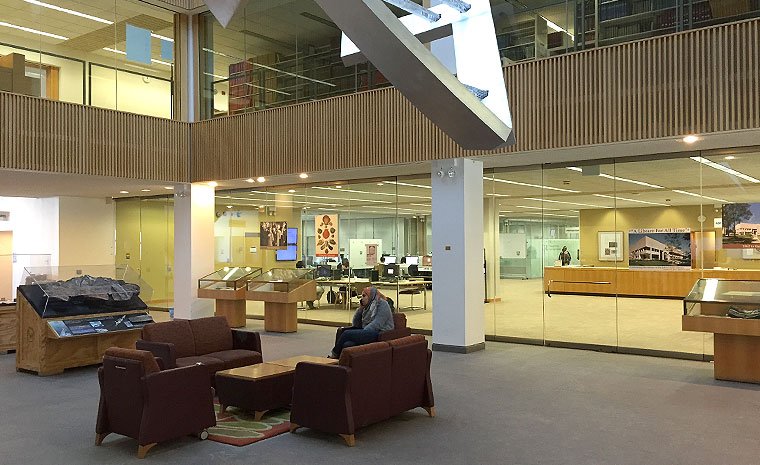Simine Short wrote the text and complied the photographs for the exhibit. The exhibit was organized by Barbara Kern and Urszula Kerkhoven. A special thank you to Kathleen Zar, Director of the Science Libraries, for her contributions including support, guidance and encouragement.
In 1896 an historic glider flight in the Indiana Dunes signaled the dawn of aviation. In command was Octave Chanute, a Paris born civil engineer with a passion for flight.
An exhibition in The John Crerar Library of the University of Chicago celebrates Chanute's accomplishments and presents highlights from the visionary's career. Many of Chanute's personal books and writings are on display, as well as a model of the 1896 glider which first took flight in the Dunes. In addition, the exhibit provides a glimpse into the future of aviation and space technology with information provided by the U.S. National Aeronautics and Space Administration.
Chanute left his imprint on his adopted city of Chicago in many ways. He designed and supervised the building of the Chicago Union Stock Yards in 1865. Years later, in 1886, he and Joseph Card formed the Chicago Tie Treatment Company. To verify the life span of the railroad ties treated in his plant, Chanute brought date nails from Europe and introduced this kind of record keeping to the United States. Some of these nails are on display.
The exhibition emphasizes Chanute's and Chicago's impressive role in the early history of aviation. He not only experimented with flight, but also extended support to many early aviation pioneers, including the Wright brothers. He was responsible for organizing the International Aeronautics Congress in August 1893 as part of the World's Colombian Exposition in Chicago. This was the first aviation conference in the United States.
Octave Chanute was an important benefactor to The John Crerar Library. He arranged for the Western Society of Engineers to donate their books to the Crerar Library, in the 1890s, and much of his own private library was donated to the Crerar at the beginning of the 20th century. It is available for today's students and scholars pursuing their passion for the history of flight.
